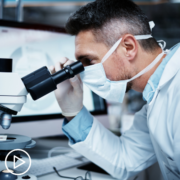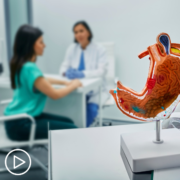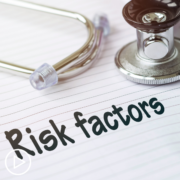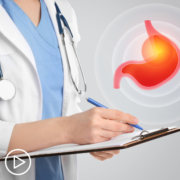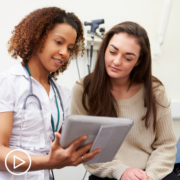Empowering Patients and Families Facing a Stomach Cancer Diagnosis
Patient Empowerment Network (PEN) is committed to helping educate and empower patients and care partners in the gastric cancer (stomach cancer) community. Gastric cancer research and treatment options are evolving, and it’s essential for patients and families to educate themselves about clinical trials, risk factors, barriers to and disparities in care. With this goal in mind, PEN continues to build on to its [ACT]IVATED Gastric Cancer program, which aims to inform, empower, and engage patients to stay updated about the latest in gastric cancer care.
Gastric cancer awareness needs more visibility for multiple reasons. Gastric cancer incidence is higher in immigrant BIPOC groups as well as specific Asian, Hispanic, and other groups. And with research discoveries, screening guidelines need to be updated in the U.S.
PEN is proud to add information about gastric cancer to educate more patients and their families about this rising health concern. Cancer survivor Lisa Hatfield interviewed expert Dr. Jun Gong from Cedars-Sinai Medical Center and Dr. Joo Ha Hwang from Stanford Medicine as part of [ACT]IVATED Gastric Cancer.
Gastric cancer patient Hoon also shared his personal journey with cancer, the HIPEC treatment he received after a recurrence, lessons learned, and his notable experience as how his journey began. “As a fit man at age 38, my symptoms started with stomach pains and bloating that wouldn’t go away. My primary care doctor prescribed antacids that worked temporarily until I stopped taking them. My doctor then ordered an endoscopy that revealed an ulcer. I felt emotional relief temporarily, but then I had a biopsy that showed cancer that was eventually diagnosed as stage IV gastric cancer after further testing. I thought to myself, how could this happen to me when I run 2 miles every day?”
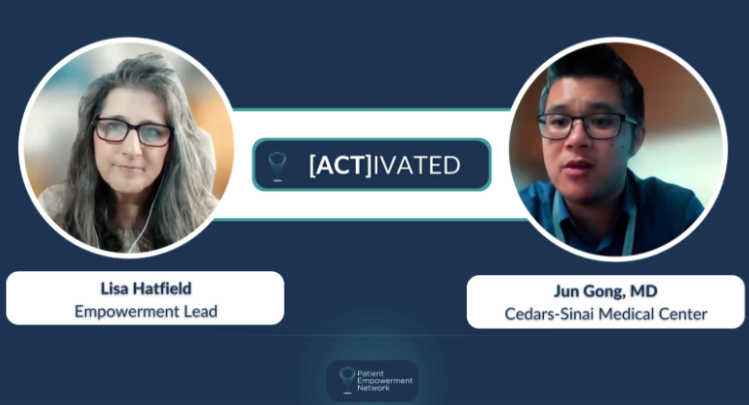
Gastric Cancer Risk Factors
Gastric cancer has strong links to risk factors for some certain population groups like Asian and Hispanic population groups, so it’s essential for patients to educate themselves about risk factors for early detection and treatment. Dr. Jun Gong from Cedars-Sinai Medical Center discussed a known risk factor for gastric cancer. “…there’s been growing evidence that H. pylori infection affects both Asians and Hispanics and is one of the more pivotal risk factors to address on a systematic level. Here, there have been ongoing research where they’re just identifying H. pylori as a procedure and eradicating it with treatment.”
As gastric cancer research expands, additional risk factors have been discovered. Dr. Jun Gong discussed some beyond Asian and Hispanic groups. “But here on the West, we tend to see more of risk factors related to the Western lifestyle. Here, gastritis or chronic gastritis, heartburn, longstanding inflammation is a risk factor. Heavy smoking, heavy alcohol use, and obesity are emerging risk factors for stomach cancer as well.”
And even though East Asia is a well-known high-risk population for gastric cancer, research has uncovered other population groups as well. Dr. Joo Ha Hwang from Stanford Medicine discussed what research has unveiled. ”… the research community in general, is one, trying to identify patients who are at particularly high risk for developing gastric cancer. And we have a pretty good idea on who that is. And it’s essentially recent immigrants from high-risk areas such as East Asia, Eastern Europe, Western, South America.”
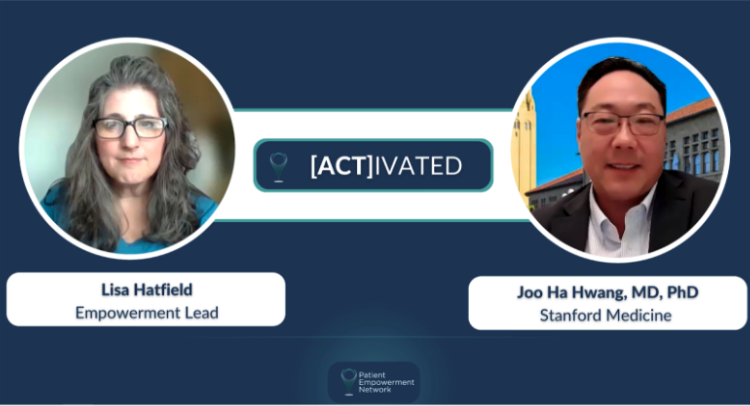
Gastric Cancer Disparities and Challenges
Dr. Joo Ha Hwang discussed challenges in early diagnosis. “Well, the key challenge in detecting early gastric cancer is that there are no symptoms or the symptoms are very generalized. You can have some vague abdominal pain, your appetite might change a little bit, but we don’t see symptoms until the later stages of gastric cancer when it’s no longer curable. So the real key challenge is to diagnose it at an early stage when it’s still curable and what we’re doing in terms of our research…”
Gastric cancer experts have also noticed some disparities in care access. Transportation barriers and challenges to receiving caregiver support are a couple challenges. Dr. Jun Gong discussed some additional challenges that he’s seen with his patients. “There are several challenges that we see in our routine care of patients that are of Hispanic or Asian ethnicity with regards to access to treatment to stomach cancer. This often involves language barriers where, at least here geographically in Los Angeles, it’s a culturally diverse population, large metropolitan center where patients often speak non-English language. And this is often a barrier to communicating and getting timely access. Other concepts that we’ve come into as well is fear of insurance coverage denials in seeing the subspecialists or access to timely diagnostics and approval of treatments through insurance.”
Gastric cancer challenges encompass other factors as well. Dr. Jun Gong shared another phenomenon that he’s witnessed. “Cultural beliefs have a huge impact on access to care in stomach cancer, and I think we can do better with addressing cultural barriers to care.”
Gastric Cancer Care Solutions and Successes
Patient advocates and others working toward closing disparity gaps have made some strides in improving care. Diversity and inclusion research and strategies have made an impact. Dr. Jun Gong discussed some efforts that have shown success. “ think one of the innovations here at our center is that we have a center of community outreach and a disparities core here where we recognize that certain cultures and this can expand beyond Asians and Hispanics into all racial groups, that there’s a heavily…there’s an important influence of church in this sector here.
And so what we do is we actively engage leaders in the churches, in the local churches for Asians, Hispanics, and a lot of different other subgroups. And we find this a great, great relationship and partnership to have for promoting awareness and educating patients about resources that we have within a culturally specific location where patients and family members find a great deal of trust in the church.”
Receiving second or even third opinions can be particularly helpful in optimizing gastric cancer care. Dr. Jun Gong discussed the successes of remote consultations. “…I actually am okay with virtual medicine consultations for those who are…who find it difficult to travel to an in-person visit. Again, I can’t speak for all other cancer centers or oncologists, but we at least offer this ability to do that, to help with that barrier of transportation. And when they are connected with us sometimes if we are able to, we can even follow peripherally, almost like an extra care partner with the main local doctor who’s driving more of the day-to-day, and we’re providing our recommendations as an extension from an urban medical center.
I know it’s specific to certain institutions and certain centers, but I actually am okay with virtual medicine consultations for those who are…who find it difficult to travel to an in-person visit, again, I can’t speak for all other cancer centers or oncologists, but we at least offer this ability to do that, to help with that barrier of transportation. And when they are connected with us sometimes if we are able to, we can even follow peripherally, almost like an extra care partner with the main local doctor who’s driving more of the day-to-day, and we’re providing our recommendations as an extension from an urban medical center.”

[ACT]IVATED Gastric Cancer Program Resources
The [ACT]IVATED Gastric Cancer program series takes a three-part approach to inform, empower, and engage both the overall gastric cancer community and gastric cancer patient groups who experience health disparities. The series includes the following resources:
- [ACT]IVATED Expert Interviews
- [ACT]IVATED Patient Vignette
- [ACT]IVATED Toolkit
- [ACT]IVATED Gastric Cancer Resources
Though there are gastric cancer disparities, patients and care partners can be proactive in educating themselves to help work toward optimal care. We hope you can take advantage of these valuable resources to aid in your gastric cancer care for yourself or for your loved one.

